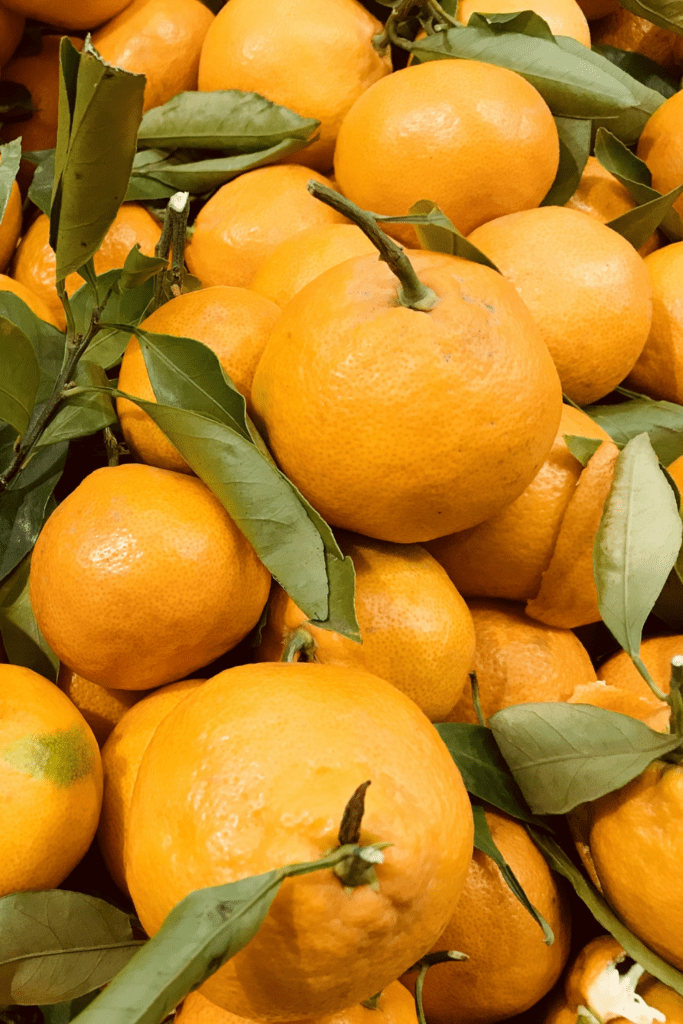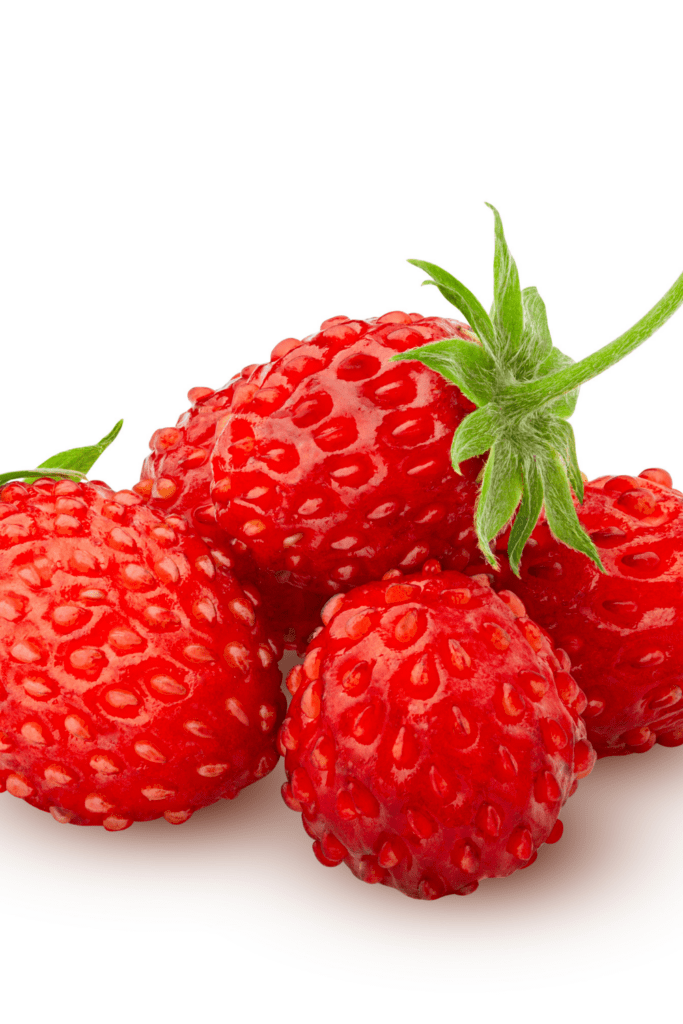When I first sat down to write out a list of fruits that start with F, I quickly jotted down figs and Fuji apples. Then I was stuck.
It took a little time and a little internet research, but I finally found a few more fruits that started with the letter F.
There were quite a few more of them than I had at first remembered. How many of these F fruits have you tried?
1. Fascell Mango
Named for Michael Fascell, the man who first cultivated this variety of mango, Fascell mangoes are a hybrid variety of mango.
Although some look more like hearts, most are oval-shaped and yellow, with some red across them when fully ripe.
They’re sweet fruits grown mostly for commercial sales.

2. Feijoa
Feijoas are grown in various countries across South America. They’re similar in shape and size to chicken eggs and are green when they ripen.
They’re juicy with a sweet flavor that’s somewhere between mint, apples, and pineapples.
They’re most well-known for their incredible scent, however, which is strong and fragrant.

3. Fig
Figs aren’t technically classified as fruits, but we all consider them fruits, so I felt they deserved a place on the list.
They’re actually inverted flowers with a very odd pollination process.
Figs are fleshy and pulpy, but the seeds also add a bit of graininess. Many people consider them to be an acquired taste.
Their sweetness is more like honey sweetness than fruity sweetness, but there’s an underlying hint of berry sweetness to them, as well.
4. Fazli Mango
Fazli mangoes are large, weighing up to two pounds, and yellow when ripe.
They can be eaten raw, but more often, they’re used to make jams or chutneys.
If eaten raw, the fruit is sweet and dense. The peel is very thin and often eaten along with the rest of the fruit.

5. Finger Lime
Also known as citrus caviar, finger limes are very popular in their native Australia and are now grown in California.
They range in color from green to a dark pink/reddish color.
You eat them by cutting off one end and squeezing the bottom to push out lots of tiny, jelly-like round pieces that resemble caviar.
When you put them in your mouth, they pop, releasing a tart lime flavor on your tongue.
They’re one of the more unique fruits I’ve ever seen and are primarily used to add flavor to seafood.
6. Florida Strangler Fig
Florida strangler figs, also called golden figs, have a mildly sweet, slightly nutty taste and are quite nutritious.
They have a ton of fiber and also contain reasonable amounts of calcium, potassium, and iron.
They taste great eaten alone, or you can add them to salads, cereal, or desserts.
7. Fe’i Banana
Unlike the bright yellow bananas we know and love, fe’i bananas are orange or red and have orangey-yellow insides that look a bit like the inside of a pumpkin.
They can be eaten raw, but most people cook them to eat them.
They’re used in many sweet and savory dishes, especially in their native Pacific Islands.

8. Fuji Apple
Fuji apples are one of the most popular apple varieties. They’re red with yellow accents, and they’re one of the sweetest apples you can find.
They’re also incredibly juicy, which makes them great for baking and canning purposes. They also make delicious cider and apple juice.
9. Flatwoods Plum
Flatwoods plums are interesting fruits because they’re edible, but also a little toxic. I know; that sounds crazy, right?
They look similar to what we think of as “normal” plums, and they’re safe to eat.
However, the plant’s leaves and the pit inside the plum are toxic, especially in large doses.
However, as long as you de-pit them, Flatwoods plums can be good for you in small doses. They aid with digestion and stimulate respiration.
The toxicity comes from a chemical called hydrogen cyanide, and that chemical also makes the plums very bitter when you first bite into them.
The bitterness fades away to a pleasant sweetness, but even so, most people prefer to use the plums in jellies and jams instead of eating them raw.

10. Fairchild Tangerine
These tangerines are a cross between Orlando tangelos and Clementine mandarins. They’re deep orange and somewhat hard to peel.
They taste citrusy sweet, as expected, and are juicier than many citrus fruits. They’re a popular commercial fruit in the United States.

11. Forest Strawberries
Forest strawberries are better known by their more common name – wild strawberries.
They look almost exactly like the strawberries you buy at the store, but they’re tiny in comparison.
They’re perfectly safe to eat and taste sweeter, juicier, and have a richer flavor than regular strawberries.
However, their minuscule size makes it hard to enjoy them.

12. Fox Grape
Fox grapes are a species of wild grapes that grow in various regions across North America and some European areas.
They have dark purple, almost black skins, and you can easily pop the meat of the grapes out of the skins.
For this reason, they’re known as “slipskin grapes” as well.
You can eat them, but they’re much more tart than most grapes; many of them are even outright sour. People often use them to make wine, jam, and jelly.
13. False Mastic Fruit
False mastic fruit may sound like an odd name, but if your scientific name were Sideroxylonfoetidissimum, you’d want people to call you something else, too.
The fruit is small and edible, but the white flesh inside is super gummy, so much so that your lips may stick together after you eat it.
It’s also bitter, but some people enjoy it.

14. Five Flavor Berry
People call these purple-red berries five-flavor berries because they taste salty, sweet, sour, bitter, and pungent.
Because of the chance for a nasty berry, most people don’t eat them raw.
Instead, people dry them to eat them. They’re also used in plenty of Eastern medicines.

15. Florida Cherry
Florida cherries, also known as Surinam cherries, are small red and orange berries that almost look like tiny pumpkins.
They’re officially ripe when they turn red, but if you want to eat them, wait until they’re even darker red, bordering on purple.
Otherwise, you’re not going to like the taste.
Once they turn a deep, purplish-red, you can eat them. They have a strong, still tangy taste that’s pleasantly refreshing.











